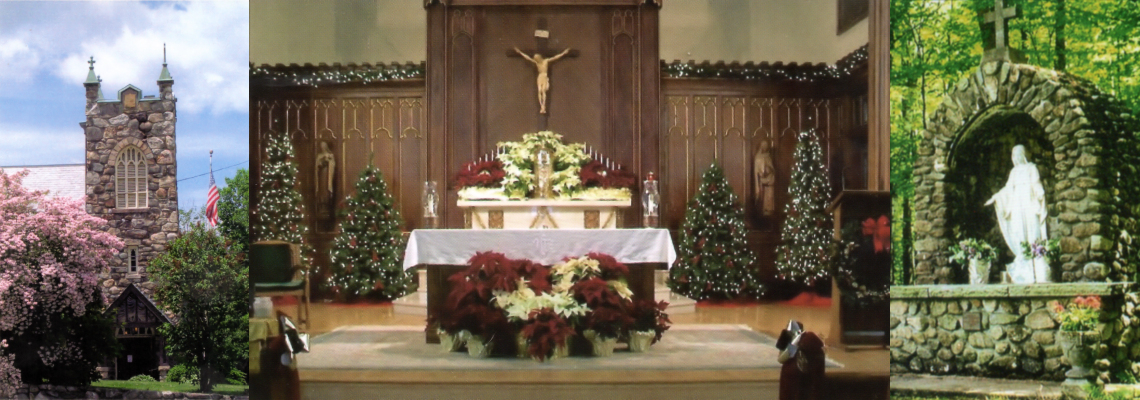An Apologetical Explanation of
Eucharistic Adoration
Why do we adore, or worship, Christ in the Blessed Sacrament?
A great multitude which no man could number, from every nation, from all tribes and peoples and tongues, standing before the throne and before the Lamb, clothed in white robes, with palm branches in their hands, and crying out with a loud voice, “Salvation belongs to our God who sits upon the throne, and to the Lamb!” And all the angels stood round the throne and round the elders and the four living creatures, and they fell on their faces before the throne and worshiped God. (Rev 7:9-11)
Christ is present to us in many ways, as in the assembled faithful or the Word of God; however, his presence in the Eucharist is unique and qualitatively superior in that he is present truly, really, and substantially in his Body and Blood, Soul and Divinity.
When the bishop or priest repeats the words of consecration during the Mass, the bread and wine become the Body and Blood of Christ. Only the appearance of bread and wine remain. This mystery of Faith is known as the “Real Presence” of Christ in the Eucharist. “This presence is called ‘real’ not to exclude the idea that the others are ‘real’ too, but rather to indicate presence par excellence, because it is substantial and through it Christ becomes present whole and entire, God and man” (Paul VI, MF 39; cf. Council of Trent, Decree on the Holy Eucharist, c. 3). (Cf. CCC 1377)
It became the custom of the early Church to set aside some consecrated hosts when the Mass had ended; today, every Catholic church has a tabernacle where the Body of Christ is reserved. The Eucharist is thereby available to distribute to the sick who could not attend Mass. Since Christ is truly present, an act of reverence is made toward the tabernacle; in the Western Church a genuflection, by which the right knee is touched to the ground, is normally used.
The Real Presence of Christ invites us also to the adoration of the reserved Blessed Sacrament; this has led to the development of many Eucharistic devotions. Eucharistic adoration before the tabernacle is one such pious practice. Many churches also have periods of adoration when a consecrated host is displayed, or exposed, in a monstrance. Some churches have chapels for perpetual adoration, which is prayer before a host that is exposed continuously. The Forty Hours devotion is practiced in many churches that do not have perpetual adoration. Eucharistic processions are conducted when the Eucharist is placed in a monstrance, which is then carried around the church and even through the streets of the town or city. (Cf. CCC 1378-1379)
When, therefore, the Church bids us adore Christ hidden behind the Eucharistic veils and pray to Him for the spiritual and temporal favors of which we ever stand in need, she manifests living faith in her divine Spouse who is present beneath those veils. (Pope Pius XII, Mediator Dei, 131)
The Catechism addresses this question in paragraphs 1378-1379.
The contents of this page are Copyright © 2014 Rev. James Socias (of the Midwest Theological Forum). These apologetics are reproduced with written consent of said copyright holder for St Patricks Parish, Jaffrey, NH website only. Reproduction of any sort must be approved directly by said copyright holder.
To get a hardcopy of these Apologetics or the Didache Bible please visit the Midwest Theological Forum (publisher) at: http://www.theologicalforum.org
